This Executive Summary Report is extracted from the results of a comprehensive study conducted by the Global Environment & Technology Foundation (GETF). For more than 20 years, GETF – a 501 (c)(3) not-for-profit organization – has been building the infrastructure for sustainable development, helping companies, governments and NGOs improve their environmental performance.
Coexcell is a leading manufacturer of innovative plastic drum technologies and for many years has led the development of state of the art, high-purity production systems for the electronic chemical industry. The company is extending these “clean” technologies beyond their traditional applications into the food and beverage industry by using innovative packaging development and commercialization to create packaging that meets the demands of sustainability.
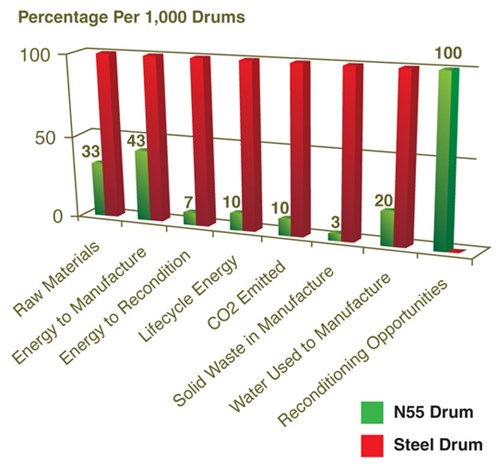
The N55 drum and pallet system is clearly advantaged when compared to 55 gallon steel drums/wooden pallet combination. Early environmental investigations compared the two packages by looking at energy and water used and by investigating CO2 and wastes that are emitted during the life cycles of each. On each and every score, the N55 system was substantially superior. The chart depicts the comparison of each package in the various dimensions of the analysis:
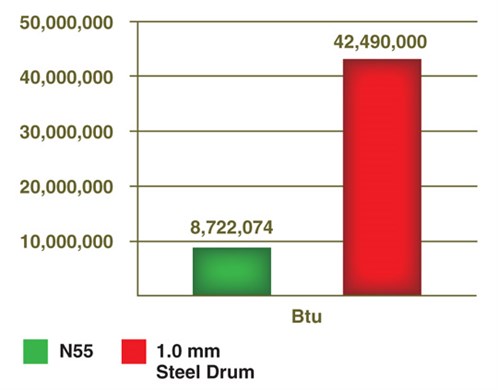
The following is a comparison of the energy used to produce 1,000 drums:
The energy used in the manufacturing process for 1,000 N55 drums is approximately 80 percent less than required to make 1,000 steel drums.The following is a comparison of lifecycle energy used for 1,000 drums:
N55 lifecycle energy use is approximately 10 percent of the lifecycle energy use for 1,000 steel drums.
According to Dr. Mike Biddle, President of MBA Polymers, recycling plastics uses only roughly 10 percent of the energy that it takes to make a pound of plastic from virgin materials.

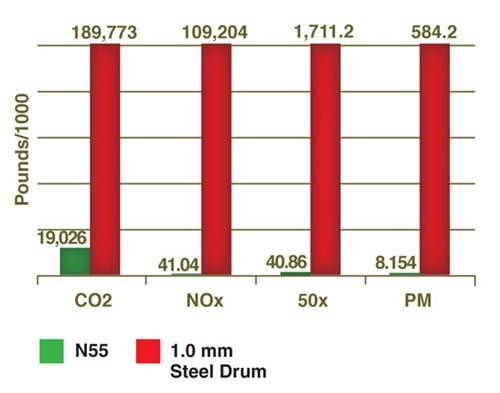
The following is a comparison of the lifecycle air emissions of representative pollutants per 1,000 drums:
Air emissions are substantially smaller for the N55 lifecycle as compared to steel drums for the primary criteria pollutants identified by the U.S. Environmental Protection Agency.
The following is a comparison of manufacturing water use: Coexcell reported that the water requirements to manufacture the N55 are relatively low. Water is used in a closed loop system for cooling. The only water required to supplement the process is for make-up water that is used to replace the water that evaporated.
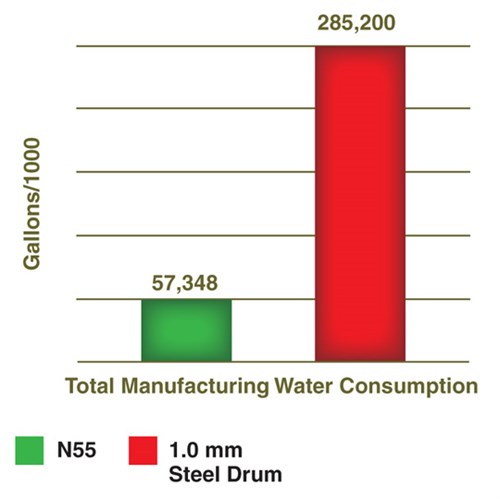

The following is a comparison of the lifecycle solid waste use:
Steel production lifecycle solid wastes are significantly greater than the N55 total of 78.1 pounds per 1,000 pounds of resin – approximately 92.1 percent. This amount does not include the additional waste from disposal of used plastic bags which many food grade products require for transport in steel drums.The reconditioning process provides a significant advantage for the N55 drum system. According to the International Confederation of Container Reconditioners, plastic drums such as the N55 are reconditioned on average twice as many times as a steel drum, which likely translates into more energy required for manufacturing, transportation and reconditioning of steel drums.
The following graph compares the key energy impacts of the reconditioning lifecycle:
The following are the key conclusions from the comparison:
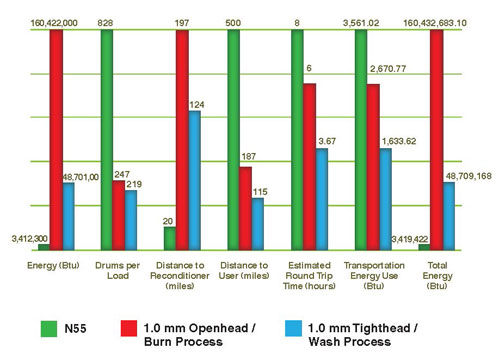
This is the Executive Summary of the results of a comprehensive study conducted by the Global Environment & Technology Foundation (GETF) between February 2010 and March 2010. For the full report, please contact U.S. Coexcell.
For more than 20 years, GETF – 501 (c)(3) not-for-profit organization – has been building the infrastructure for sustainable development, helping companies, governments and NGOs improve their environmental performance.